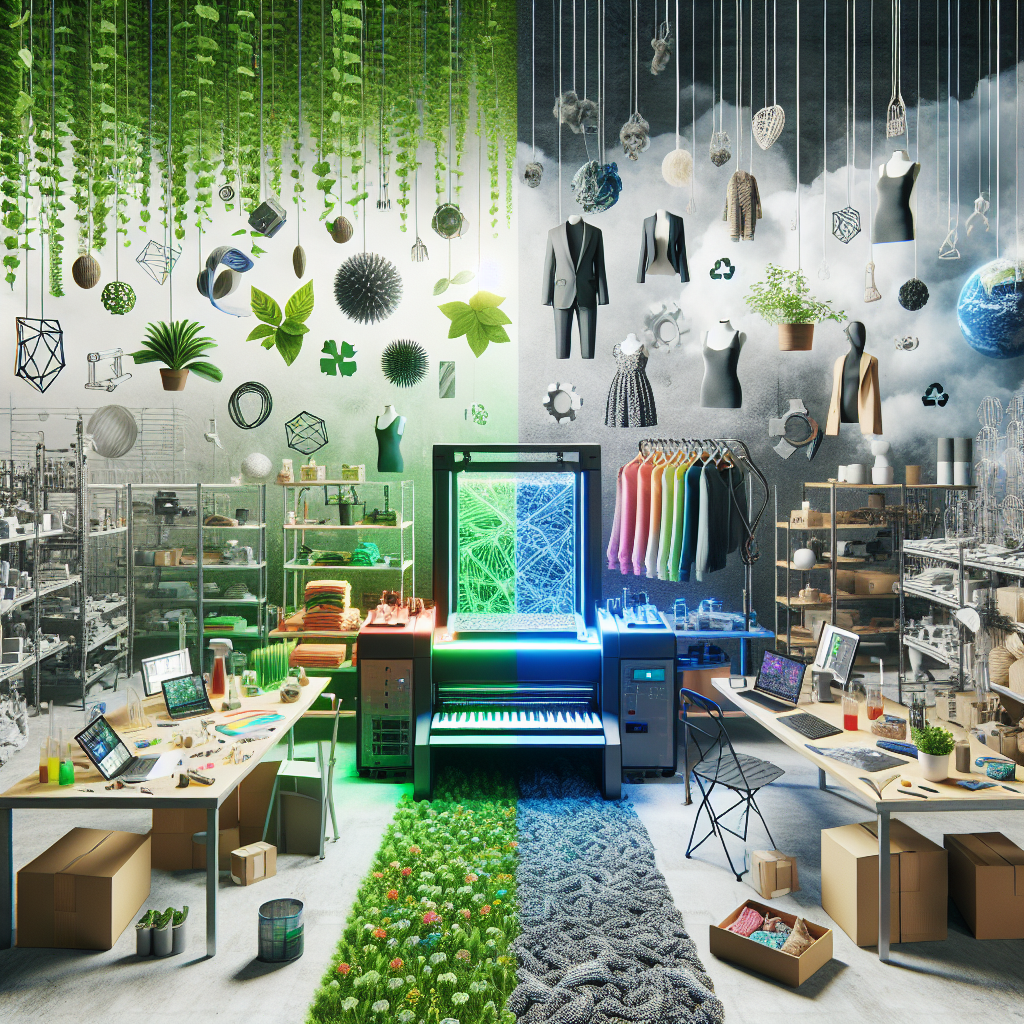The Intersection of Technology and Sustainable Fashion: A Path Towards a Greener Future
In the modern era, the intersection of technology and sustainable fashion represents a beacon of hope for both the environment and the fashion industry. As we become more aware of the environmental impact of our clothing choices, technology emerges as a powerful ally in the quest for sustainability. This article explores how cutting-edge technological advancements are redefining the boundaries of fashion, fostering a more sustainable and environmentally friendly industry.
The Rise of Sustainable Fashion
Sustainable fashion, at its core, is about creating and consuming fashion in a way that can be sustained by the environment and society over the long term. It involves a comprehensive approach, considering the entire lifecycle of a garment — from the sourcing of materials to its ultimate disposal. The movement towards sustainable fashion reflects a growing acknowledgment of the fashion industry’s significant environmental footprint, including water pollution, chemical use, and waste production.
The Role of Technology in Sustainable Fashion
Technology is playing an instrumental role in transforming the fashion industry into a more sustainable enterprise. Through innovation and creativity, technology offers solutions that minimize environmental damage while maximizing efficiency and productivity. Below are key areas where technology and sustainable fashion intersect:
1. Eco-friendly Materials
One of the most significant impacts of technology on sustainable fashion is the development of eco-friendly materials. Researchers and companies are innovating with bio-fabrics made from organic and renewable sources, such as pineapple leaves, mushroom roots (mycelium), and even recycled plastics. These materials not only reduce waste but also offer a more sustainable alternative to traditional textiles like cotton and polyester, which have high water and carbon footprints.
2. 3D Printing and Digital Sampling
3D printing is revolutionizing the way clothes are designed and produced. This technology allows for precise, on-demand production, which significantly reduces waste associated with overproduction and unsold inventory — a common issue in the fashion industry. Similarly, digital sampling enables designers to create and tweak prototypes virtually, cutting down on the resources and time traditionally required for physical samples.
3. Supply Chain Transparency
Blockchain technology is enhancing transparency in the fashion supply chain. By providing a tamper-proof, decentralized record of transactions, blockchain technology allows consumers to trace the origin of their garments. This transparency fosters accountability, encouraging brands to adopt more sustainable practices and enabling consumers to make informed choices.
4. Water and Energy Conservation
Technological advancements are also paving the way for more efficient use of resources in textile production. Innovations in dyeing processes, for example, are reducing water and energy consumption dramatically. Techniques like dry dyeing, which uses carbon dioxide instead of water, and digital printing, which applies designs directly onto fabric, are becoming more widespread, showcasing technology’s potential to reduce the environmental impact of fashion production.
The Challenges Ahead
While technology offers promising solutions, the intersection of technology and sustainable fashion also faces several challenges. The high cost of new technologies can be a barrier to widespread adoption, especially for small and medium-sized enterprises. Furthermore, the rapid pace of technological advancement can lead to issues with obsolescence and waste. Addressing these challenges will require ongoing innovation, as well as collaboration between tech companies, fashion brands, and policymakers.
The Future of Technology and Sustainable Fashion
The future of sustainable fashion, bolstered by technology, looks bright. As we continue to explore and invest in sustainable practices and technologies, the fashion industry can significantly reduce its environmental footprint. The key to success lies in collaboration and a shared commitment to sustainability across the entire supply chain — from material suppliers to fashion brands and consumers.
FAQs
Q: What is sustainable fashion?
A: Sustainable fashion refers to practices in the fashion industry that reduce environmental impact and promote social responsibility, from the sourcing of materials to the production and disposal of clothing.
Q: How does technology contribute to sustainable fashion?
A: Technology contributes to sustainable fashion by enabling the development of eco-friendly materials, improving supply chain transparency, reducing waste through on-demand production, and conserving resources such as water and energy in manufacturing processes.
Q: Can sustainable fashion be affordable?
A: While sustainable fashion can sometimes be more expensive due to the higher costs of eco-friendly materials and ethical labor practices, technological advancements are helping to reduce production costs. Additionally, the durability and longevity of sustainably made garments can offer better value in the long term.
Q: How can consumers support sustainable fashion?
A: Consumers can support sustainable fashion by purchasing from brands that prioritize sustainability, choosing quality over quantity, and being mindful of the lifecycle of their garments, including proper care and recycling or donating when no longer needed.
Q: What is the biggest challenge facing sustainable fashion today?
A: One of the biggest challenges is making sustainable practices accessible and affordable for all brands, including small and independent labels. Overcoming this challenge requires innovation, investment in sustainable technologies, and consumer demand for sustainable products.
The intersection of technology and sustainable fashion is more than a trend; it’s a necessary evolution of the industry. As technology continues to advance, its integration into sustainable fashion practices offers a promising path towards a more environmentally conscious and ethically responsible fashion industry. By embracing these innovations, we can all play a part in shaping a greener, more sustainable future for fashion.

